ARTICLE AD BOX
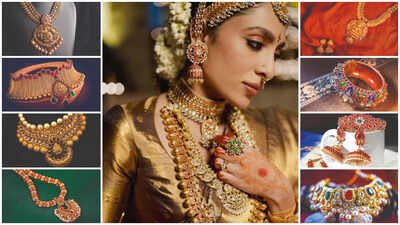
Traditionally, gold designs in these regions featured divine symbols and motifs used in worship, symbolising power and prosperity.
As India’s timeless love affair with gold takes centre stage once again during Dhanteras, it’s worth noting that gold is not just as an auspicious metal of wealth, but also a storyteller of tradition.
From the divine temple jewellery of Tamil Nadu to the intricate Meenakari of Rajasthan, the delicate filigree of Odisha, and the regal Polki of Punjab, every region’s gold design whispers tales of dynasties, devotion, craftsmanship, and cultural identity. ‘Sacred patterns in gold have evolved into modern-day style statements’“North Indian states like Maharashtra, Gujarat, Rajasthan, and West Bengal have a rich historical connection with gold, often linked to goddesses such as Mumba Devi , Lakshmi, Shakambari , and Kali .
Traditionally, gold designs in these regions featured divine symbols and motifs used in worship, symbolising power and prosperity. Over time, these sacred patterns have evolved into modern-day style statements, blending spiritual heritage with contemporary fashion trends,” says Arvind, a jewellery historian.Tamil Nadu – Temple jewellery:
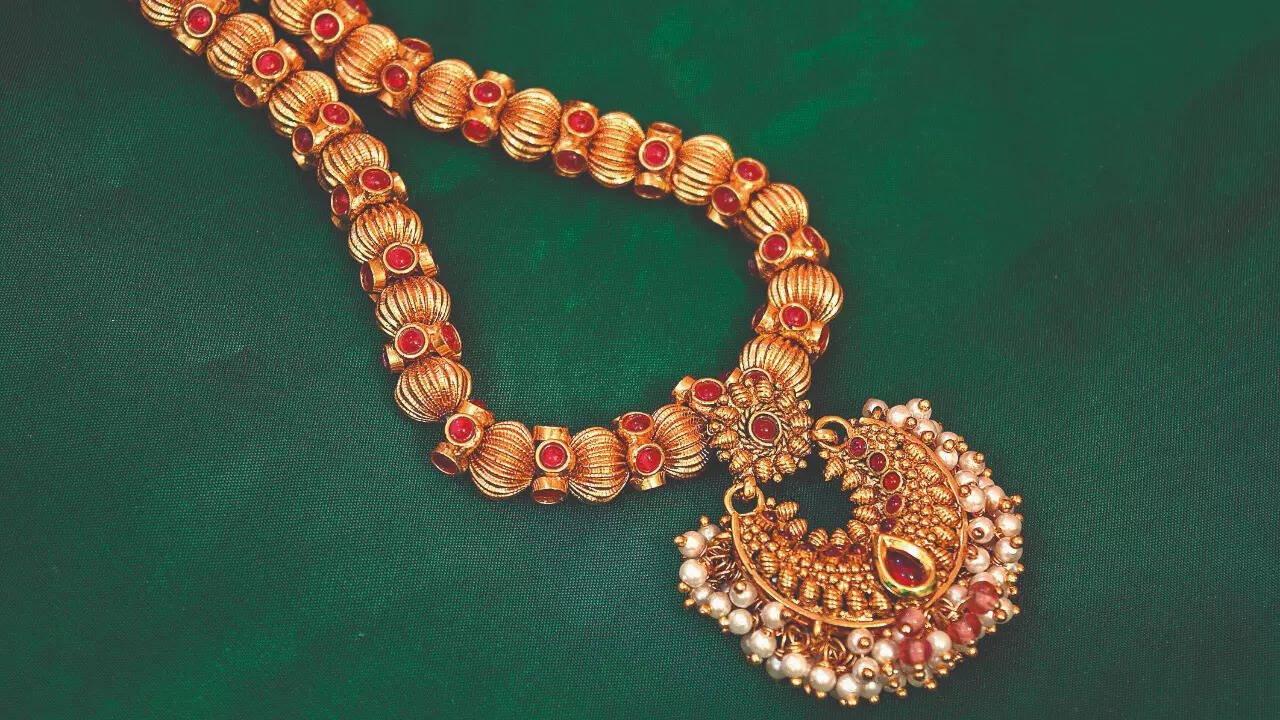
Rooted in the Chola era, Tamil Nadu’s temple jewellery traces its origins to the ornaments adorned by deities in ancient temples.
Crafted in pure gold and often set with rubies, emeralds, and uncut diamonds, these pieces echo South India’s sacred artistry.Kerala – Kaasu mala & Mullamottu mala:
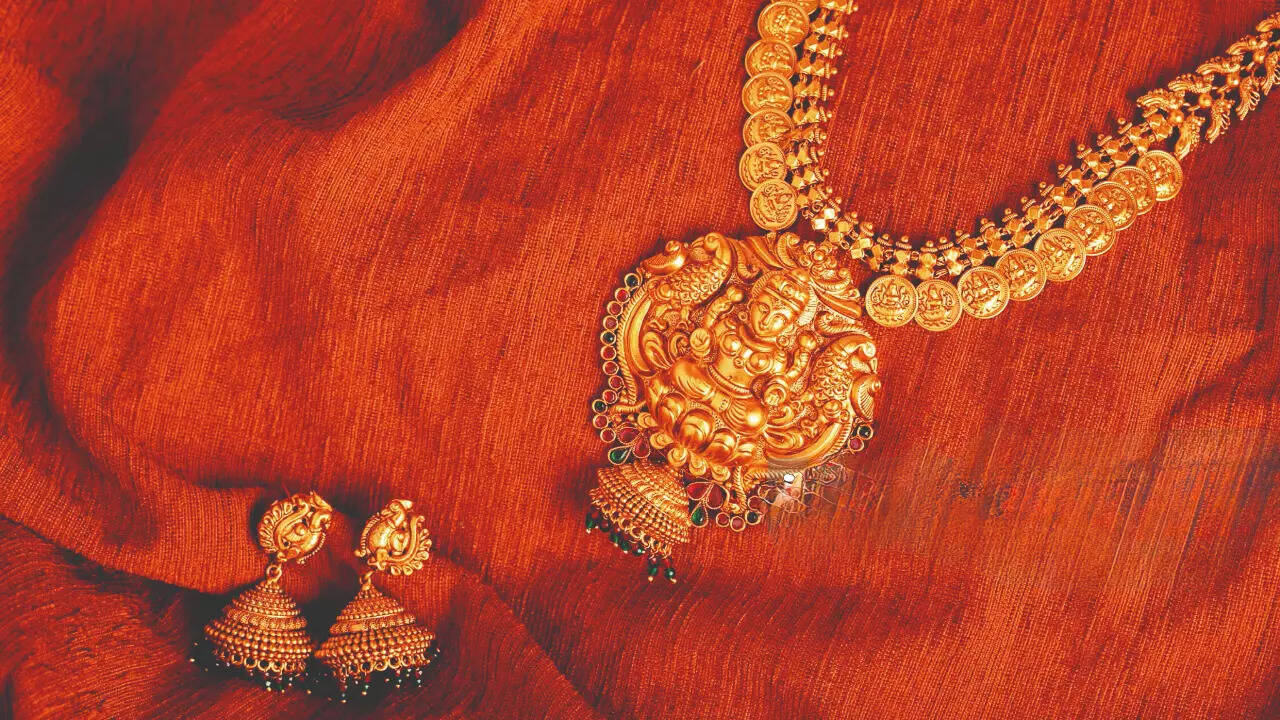
Kerala’s gold culture is deeply rooted in purity and symbolism. The kaasu mala (coin necklace) and mullamottu mala (jasmine bud design) trace back to the early Chera and Pandya periods, representing prosperity and continuity.Andhra Pradesh – Mango mala & Nakshi:
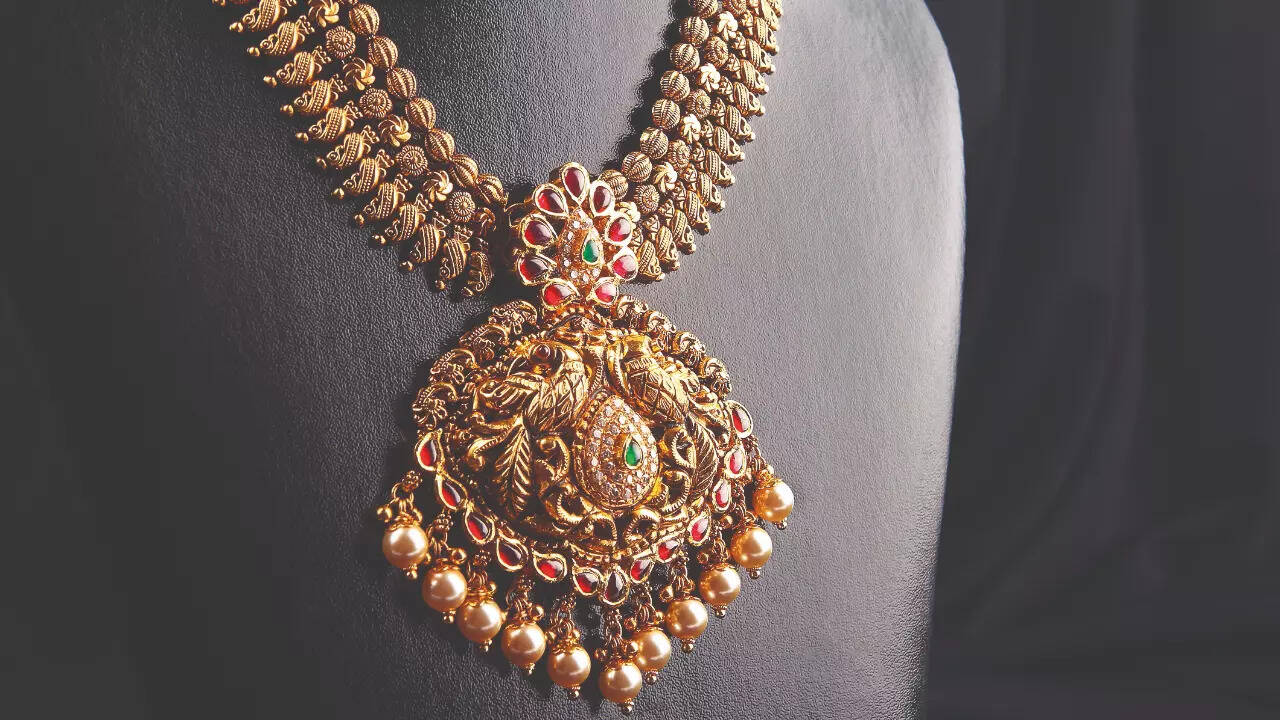
The Mango Mala, shaped like ripe mango motifs, symbolises fertility and abundance, and is often gifted to brides.
The gold artisans of Andhra Pradesh are famed for Nakshi work — intricate carvings inspired by temple sculptures and mythological tales.Karnataka – Kasina sara:
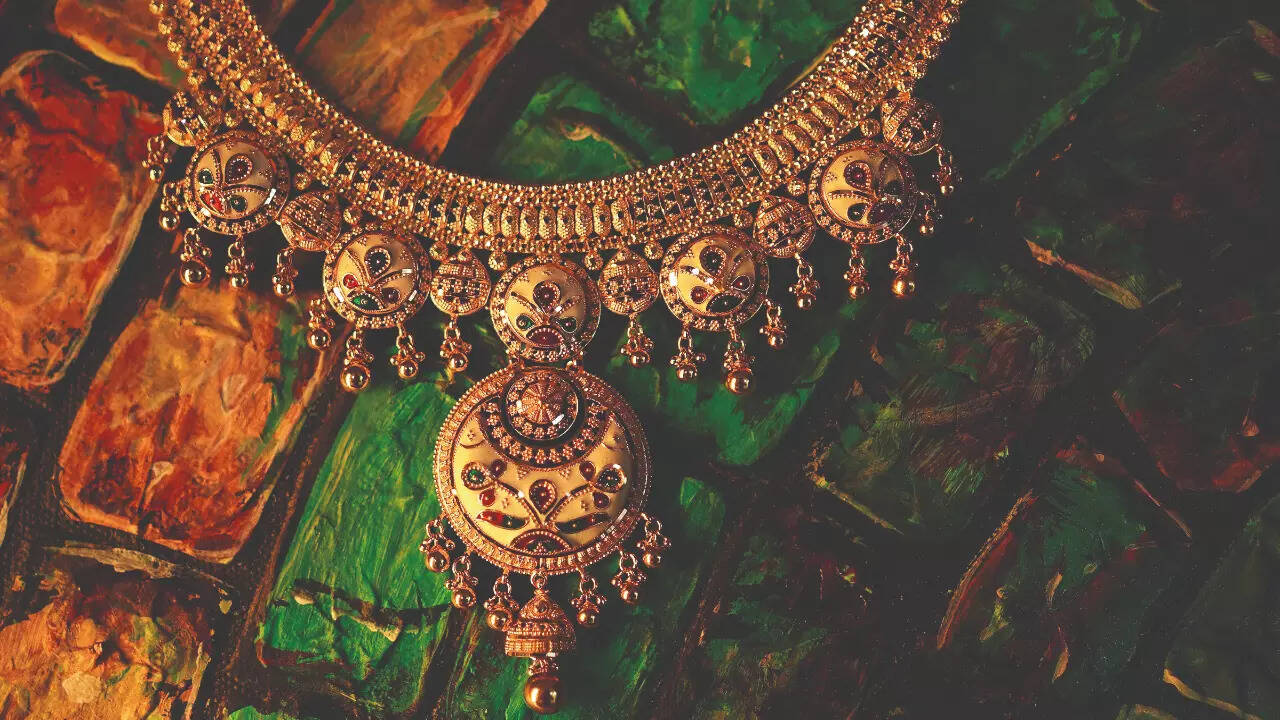
Karnataka’s designs echo ancient temple carvings and traditional motifs. The kasina sara (coin chain) blends gold with intricate detailing and heritage symbolism.Rajasthan – Meenakari:
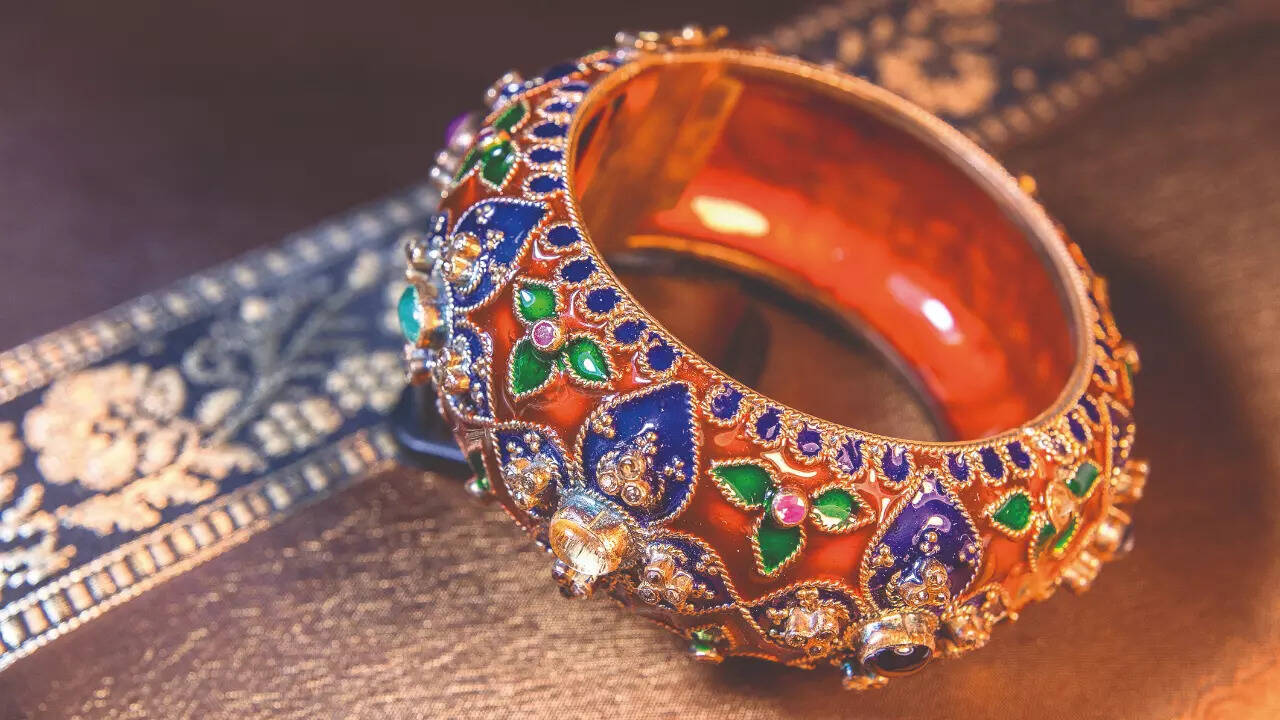
Originating from the Mughal courts, Meenakari jewellery from Jaipur is famed for its vivid enamelling on gold.
Each piece is a canvas of hand-painted floral motifs and Persian-inspired patterns, showcasing a perfect fusion of art and metal.Punjab – Polki:
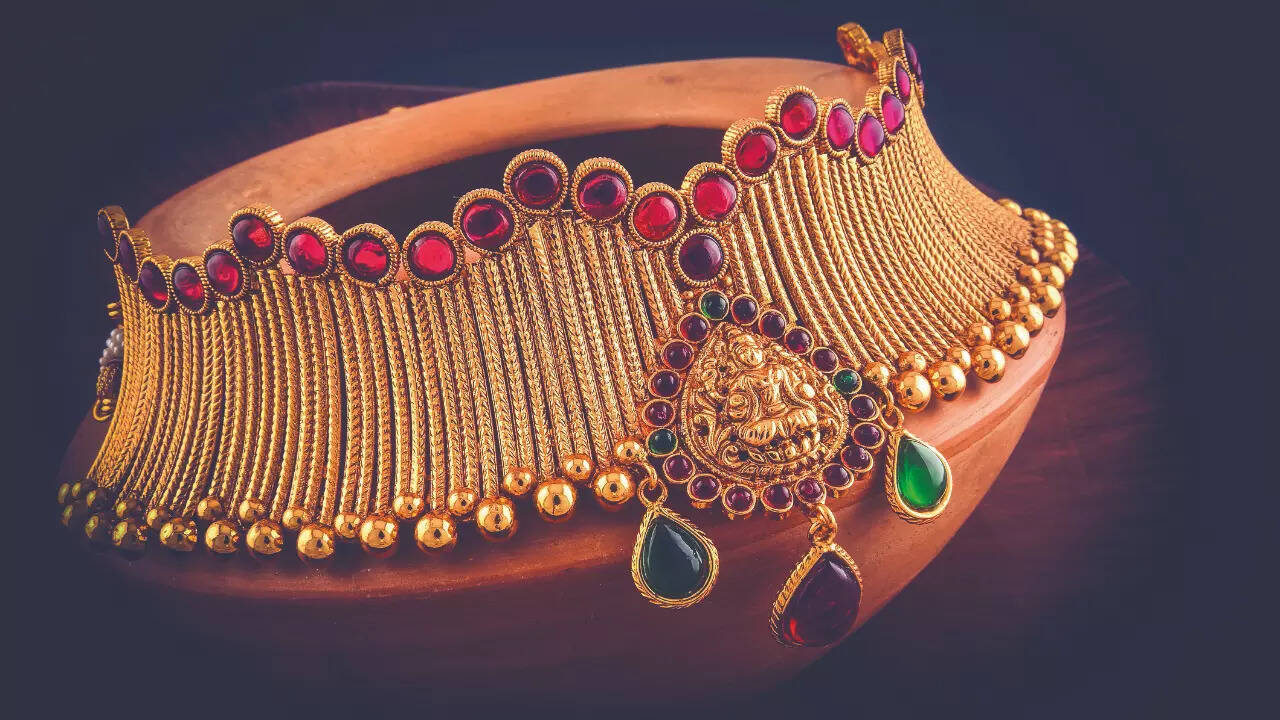
Polki jewellery, with its uncut diamonds set in gold, has been synonymous with Punjabi weddings and royal adornment since the Mughal period. Its raw brilliance and bold designs lend a vintage grandeur that never goes out of style.Maharashtra – Thushi & Kolhapuri saaj:
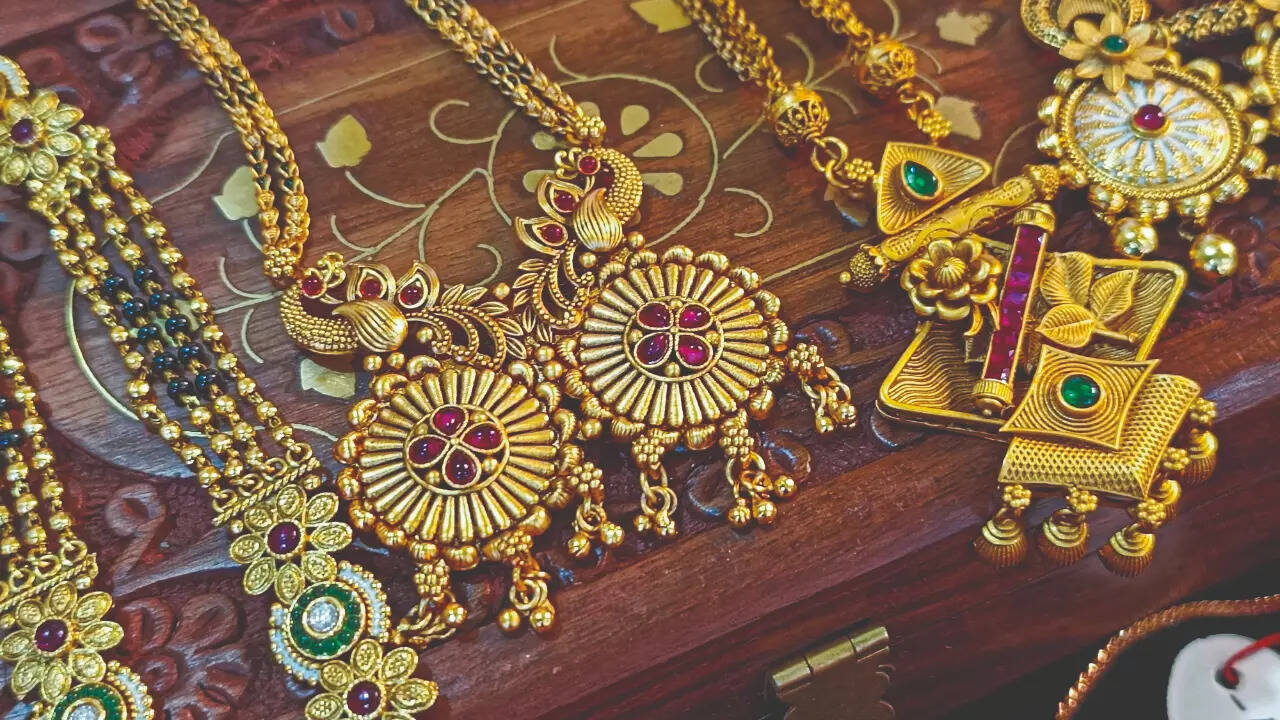
Maharashtrian thushi (tight gold choker) and Kolhapuri saaj (sacred necklace) represent warrior strength and spiritual devotion.
Once worn by royals, these now signify pride and grace among modern brides.West Bengal – Bengali nakshi:
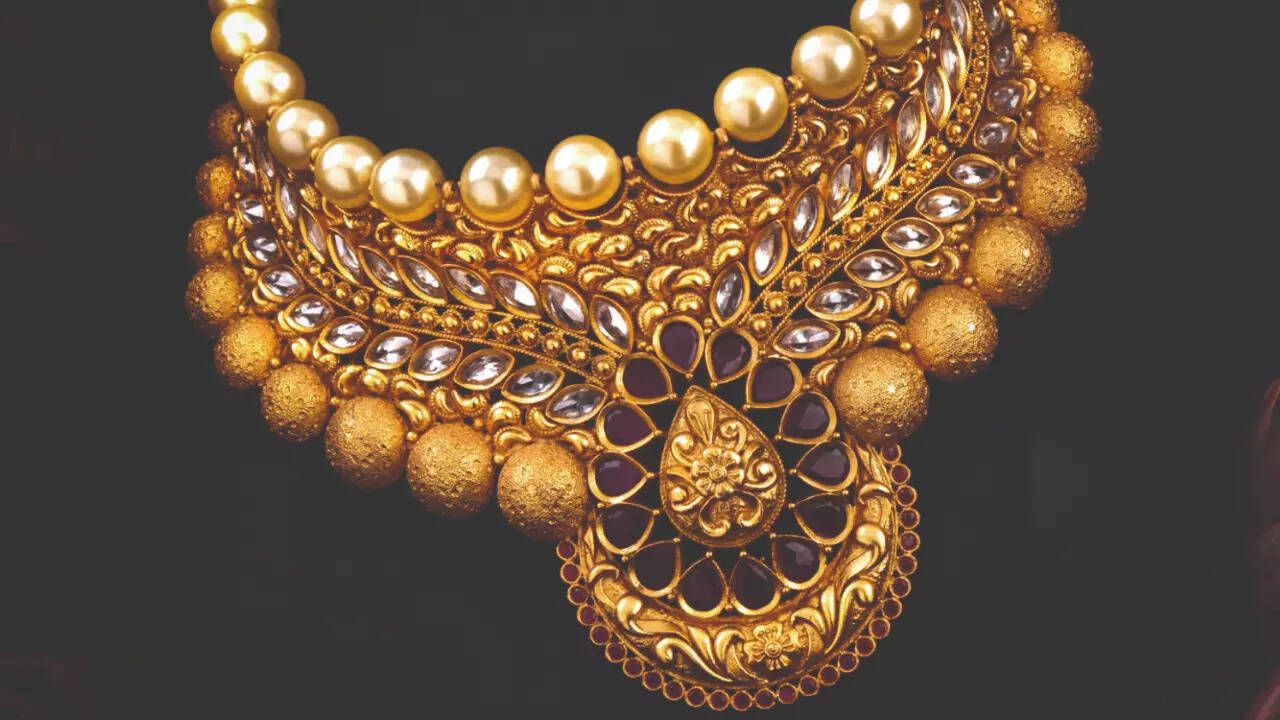
The Bengali nakshi is different from the one that originated in Andhra Pradesh. Rather than gods and temple patterns, this one has ornate filigree, floral designs, and intricate general patterns. These pieces often carry emotional symbolism, passed down generations as heirlooms.Gujarat – Kundan & Thewa:
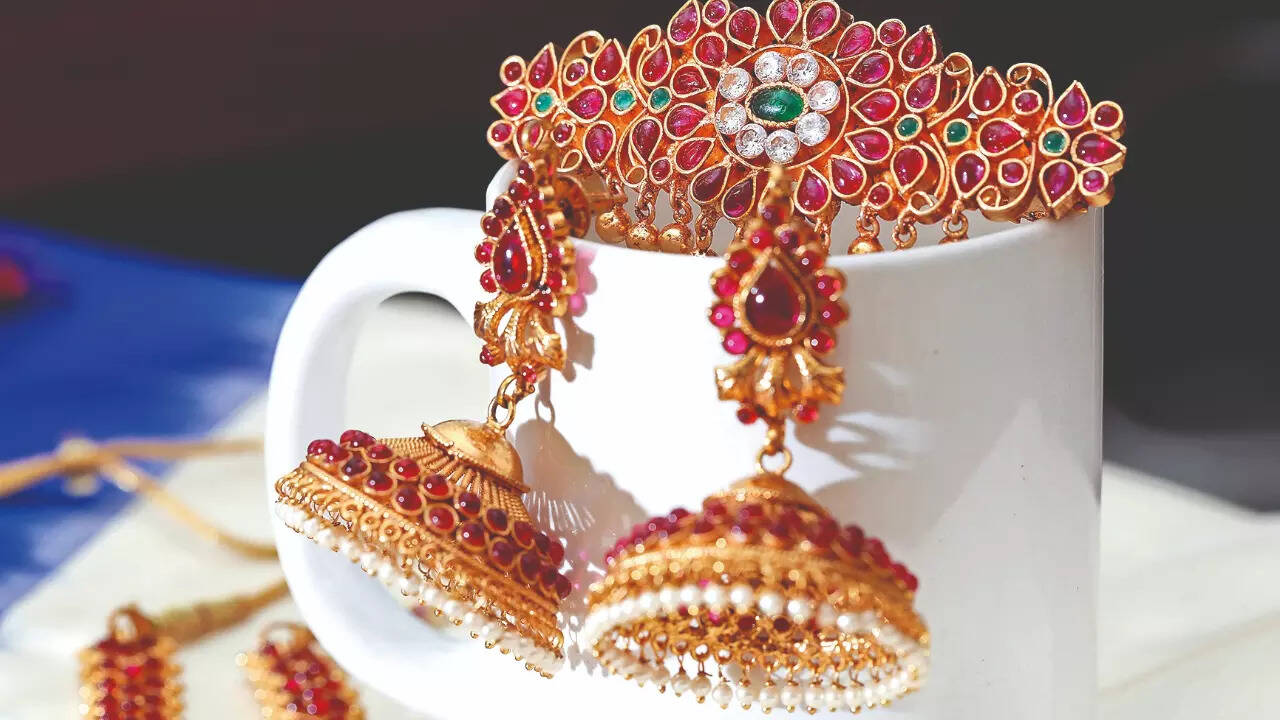
In Gujarat, kundan jewellery shines as a symbol of opulence, with glass stones set in pure gold. Thewa, a rare Rajasthani-Gujarati hybrid, involves fusing gold sheets onto coloured glass, depicting royal hunts and mythological scenes.Bihar & Uttar Pradesh – Navratna & Mughal influence:
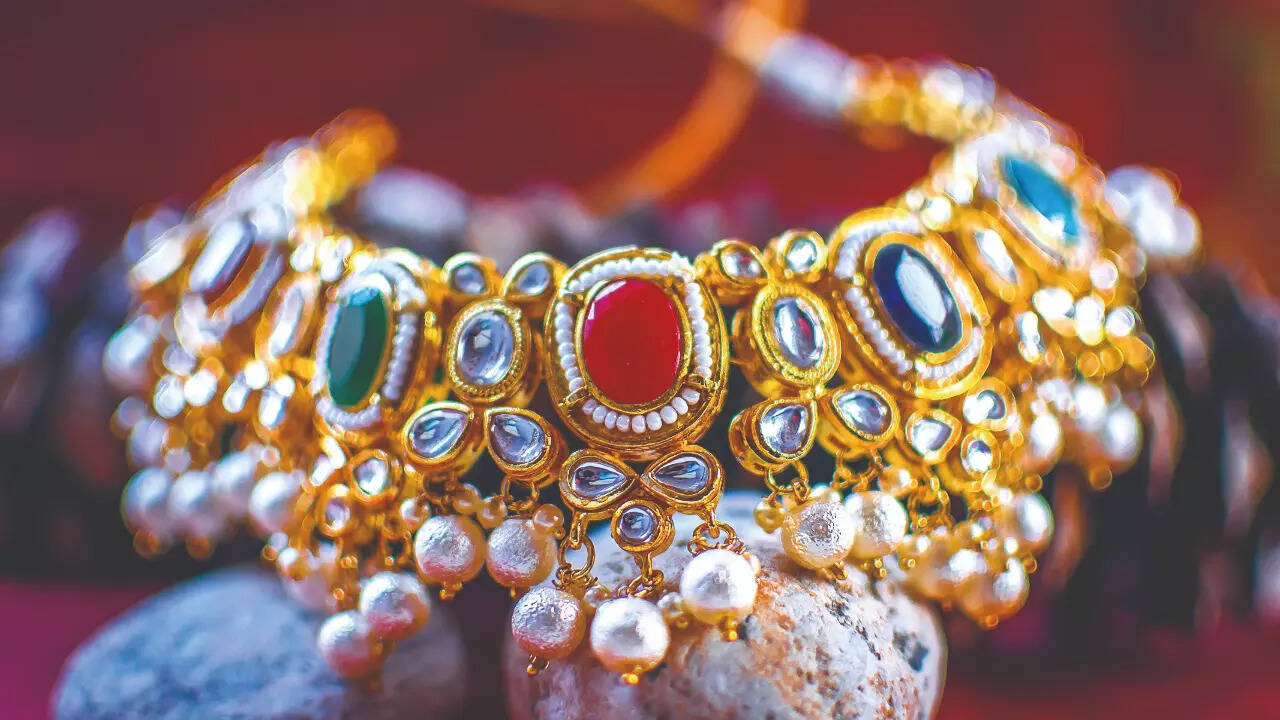
The plains of North India saw the rise of Navratna (nine-gem) jewellery — believed to bring cosmic harmony and good fortune. The Mughal influence added grandeur through detailed stonework and enamel finishes.

 1 hour ago
3
1 hour ago
3









 English (US) ·
English (US) ·